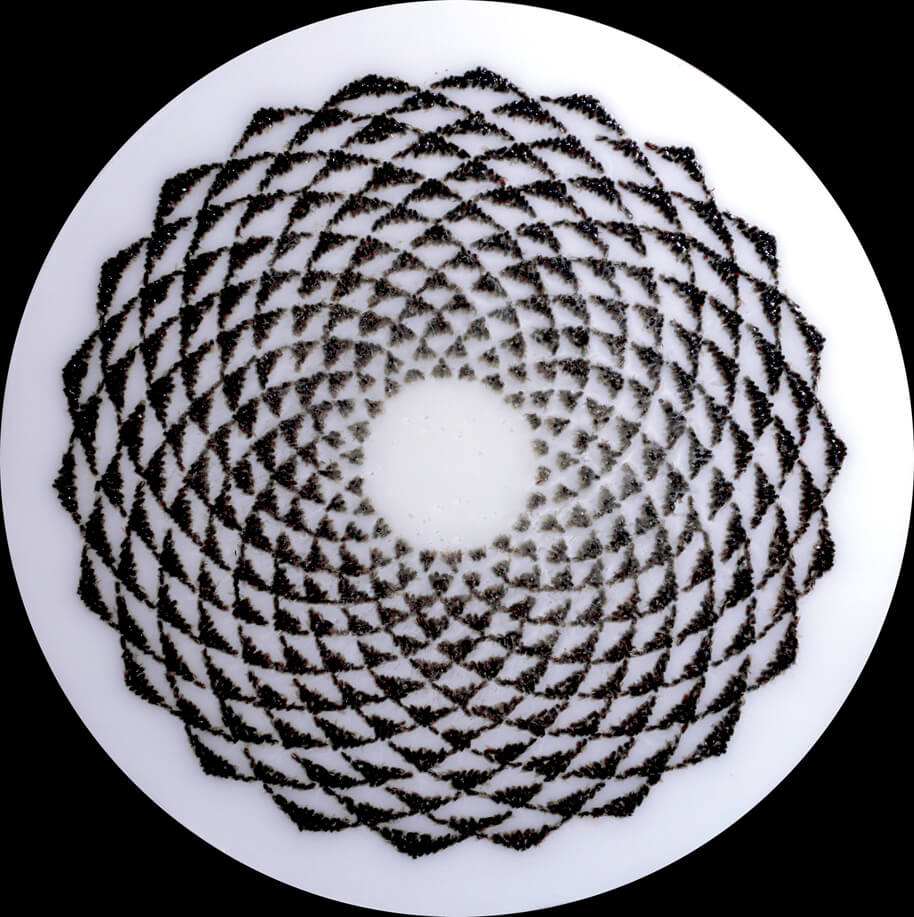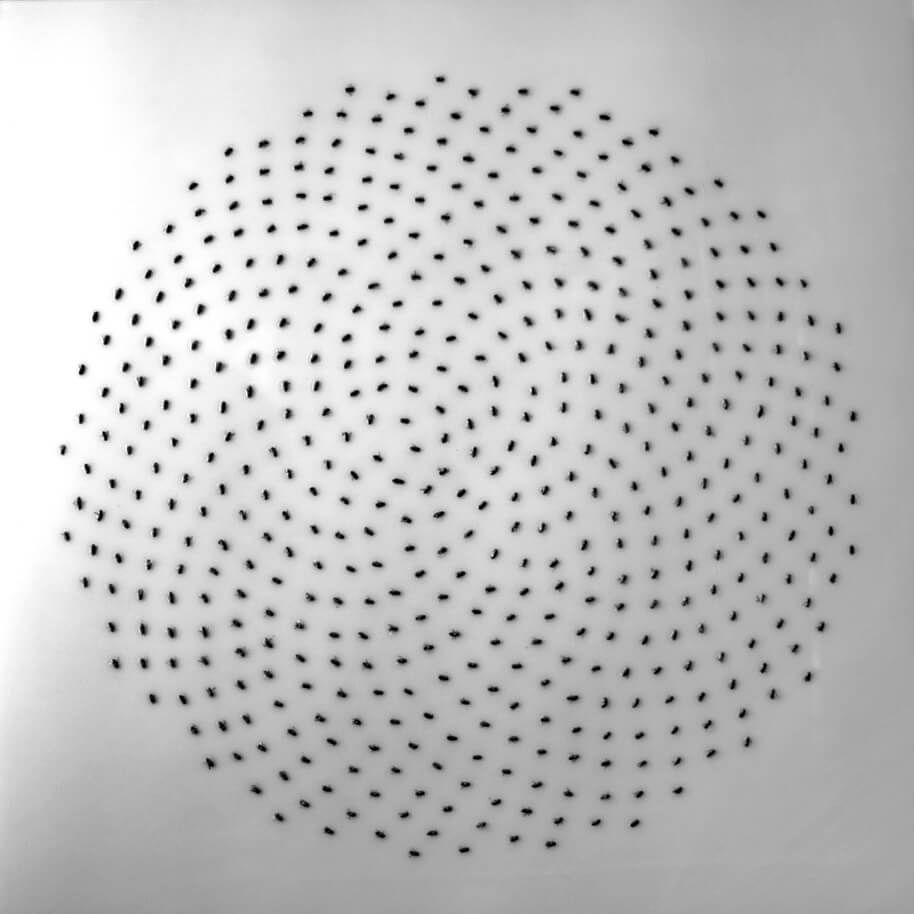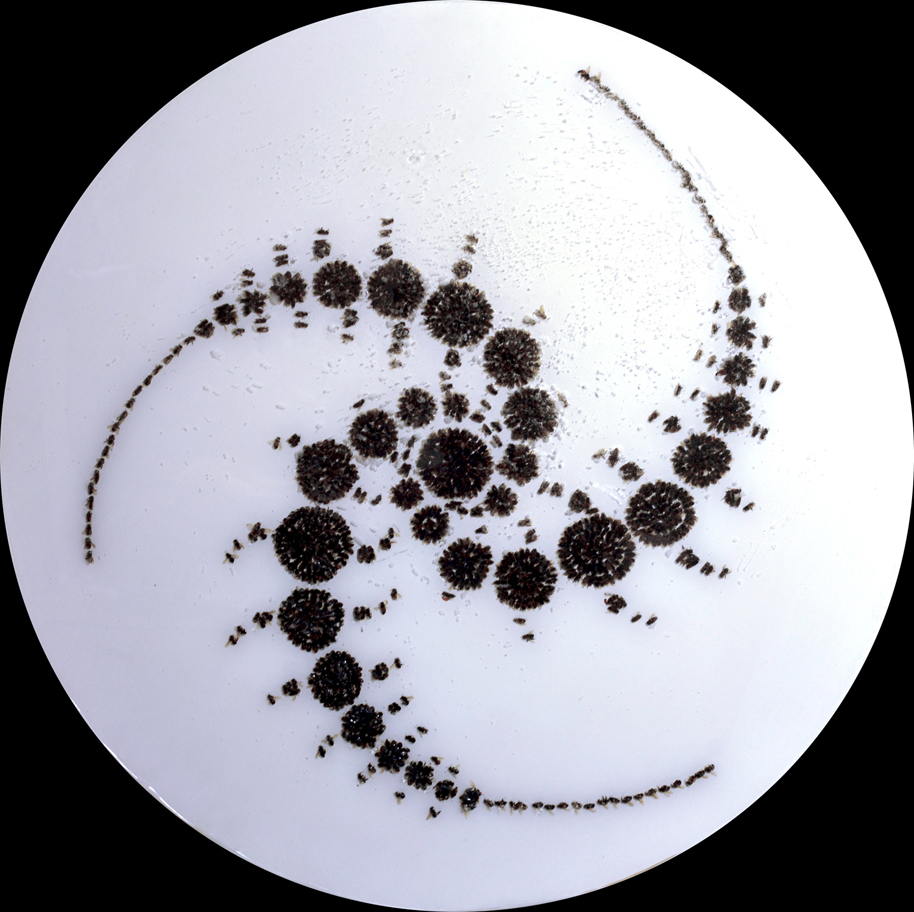Words by Lula Criado
Sarah Hatton —English-born, Canadian-based visual artist— has a special relationship with bees and an innovative and creative approach to art. She blends the Fibonacci number and other mathematical patterns with bees to explore the worldwide decline of bee populations due to the use of neonicotinoid* pesticides.
On one hand, the Fibonacci number, a sequence of numbers 0 and 1 and the subsequent sum of the previous two, appears in various patterns in nature, such as the shells of spirals, the seeds on the sunflowers or the description of a population of honeybees.
On the other hand, neonicotinoid pesticides —derived from nicotine— target bees’ nervous systems and make them lose their ability to navigate. The relationship between Sarah and bees started a long time ago. She is also a beekeeper, so the dead bees she took to make her project —Bees— come from her own hives.
*The European Union adopted last May a ban on the use of three neonicotinoids that took effect December 1st
What do you see as the ultimate discovery in human history?
In human history, specifically, it would be the act of drawing. I never tire of the basic connectivity of leaving something meaningful for another to find.
Oh, and fermentation, too – that’s important.
Do you find creativity where there was once insanity?
One does not negate the other. Only when we are able to freely explore our thoughts, the codified restrictions on those thoughts, and alternative ways to see, can we fully reach our creative potential.
If you would have to give up one of your five senses, which one would it be and why?
Probably taste. In my experience, nothing tastes as good as seeing your love smile, hearing their voice, feeling their touch, catching their scent…
Empathy and apathy… Would you be able to work with someone like yourself?
Absolutely, I seek it out and am very reluctant to loosen my grip once I find it.
How do you cope with creative desperation?
I take myself out into the natural environment where I am most inspired. I seek out similar souls. I confront cycles of life and death directly. I’ve found that connections present themselves when they are ready.
And one for the ride, when do you decide that enough is enough?
If work begins to look too familiar to me, or I lose that feeling of butterflies in my stomach, I know that I have worn its edges down. Then it is time to rattle the cage a bit.









